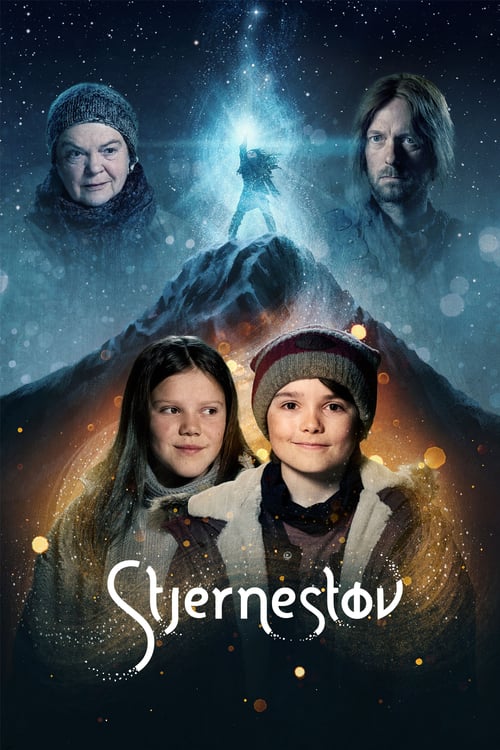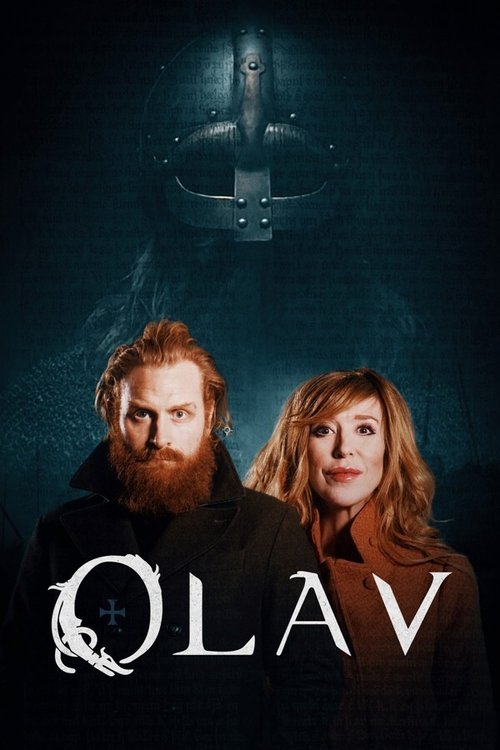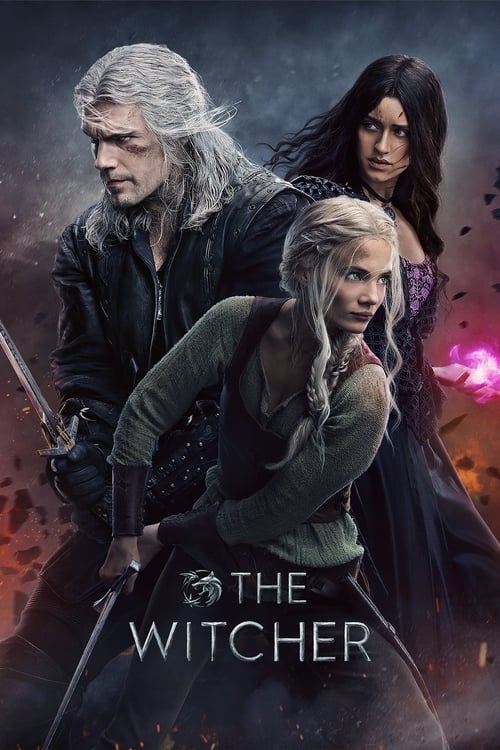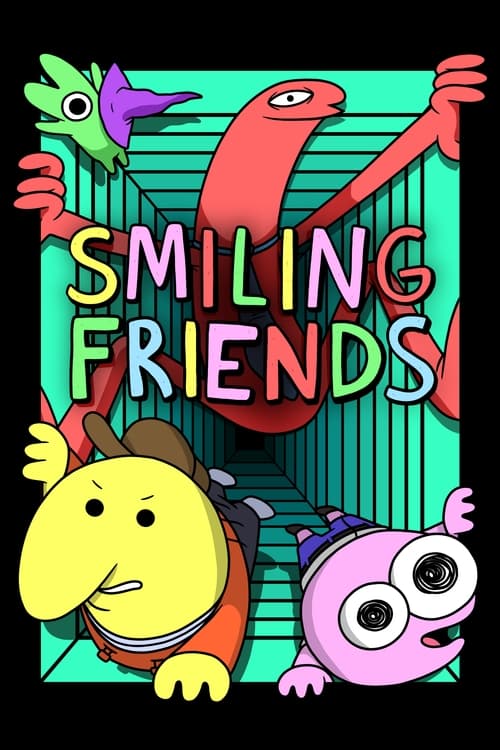
Ask Your Own Question
What is the plot?
The episode opens with Magne at his high school graduation, surrounded by classmates and family. As the ceremony proceeds, Magne notices Hod playing with a bow and arrow, which is unusual given Hod's previous injury from an arrow. Suddenly, Hod shoots an arrow at Jens, hitting him in the face. However, no one around reacts to this violent act, and Jens appears unharmed. This moment marks the beginning of a surreal sequence where Magne envisions a massive supernatural battle unfolding before him.
Magne's vision intensifies as Laurits summons a trio of giants to fight against the gods. The crowd of students and parents watches the battle calmly, as if it is a normal event. Magne sees various characters from the series engaged in combat, including Fjor and Saxa, but the scene is dreamlike and detached from reality. This battle sequence is chaotic, with gods and giants clashing violently, but the onlookers remain indifferent.
As the vision continues, Magne realizes that all the supernatural events he has experienced throughout the series--the battles, the powers, the mythological elements--are actually taking place inside his mind. The entire story of Ragnarok, including his identity as Thor and the conflicts with the Jutul family, is revealed to be a mental construct rather than reality.
The episode then shifts back to a more mundane reality. Magne is seen holding a plastic Mjolnir and reading Thor comics, symbolizing that his heroic journey was imagined. Saxa is shown working with environmental activists and investors to address the pollution caused by Jutul Industries, indicating that the real-world conflict centers on environmental issues rather than mythological battles.
Meanwhile, Laurits prepares to move out with Jens, suggesting a new beginning for their relationship and life away from the supernatural drama Magne imagined. The town of Edda is depicted as embracing a new dawn of peace and normalcy, free from the predestined apocalyptic future that Magne foresaw.
The final scenes emphasize that despite Magne's vivid visions and struggles, the catastrophic Ragnarok event never actually occurs. Instead, the series concludes with a focus on human relationships, environmental activism, and the characters moving forward in a world without gods and giants.
Throughout the episode, key decisions include Magne's acceptance of his imagined identity and the relinquishing of his heroic role, Saxa's commitment to fighting pollution through activism, and Laurits and Jens's decision to start a new life together. The episode ends on a quiet, grounded note, contrasting sharply with the epic battles and mythological themes that dominated the series.
What is the ending?
At the end of Ragnarok Season 3, Episode 6 ("Ragnarok"), the anticipated apocalyptic battle known as Ragnarok does not actually occur in reality. Instead, the entire supernatural conflict, including battles between gods and giants and the death of key characters, is revealed to be a vision or mental projection inside Magne's head. The episode closes with Magne at his graduation, choosing to move beyond the cycle of destruction and embrace a more peaceful, ordinary life with his friends and loved ones.
The episode opens with a calm scene in the town of Edda, where peace has seemingly settled after the long-standing conflicts. Magne, having graduated from school, is seen trying to live a normal teenage life, putting down his hammer and stepping away from his role as Thor. Saxa is involved in activism and efforts to reduce pollution caused by Jutul Industries, reflecting the show's environmental themes.
During the graduation ceremony, Magne notices Hod, a boy who had previously been injured by an arrow, now playing with a bow and arrow. Suddenly, Magne envisions Hod shooting an arrow that strikes Jens (who represents Baldur in the Norse mythology within the show) in the heart. Despite this shocking event, the crowd around them remains oblivious and continues applauding, creating a surreal atmosphere.
Following this, Magne's vision expands into a massive battle where Laurits leads giants against the gods, and various one-on-one fights unfold. The scene shifts rapidly through these battles, showing the chaos and destruction that would be Ragnarok. However, the audience soon understands that these events are not happening in reality but are projections of Magne's mind, exploring the possible consequences if Ragnarok were to come to pass.
After the vision fades, Magne is left alone in the school auditorium. Signy approaches him and shares a heartfelt moment, confessing that love is the most dangerous emotion. She asks Magne to promise to be there for her and to do his best moving forward.
The episode ends with Magne discarding the Thor comics and the plastic Mjolnir that had influenced his fantasies, symbolizing his decision to leave behind the mythic battles and embrace a more grounded life. He reunites with his friends, who are all alive, and they share a peaceful moment together, marking a hopeful new beginning.
Regarding the fates of the main characters involved in the finale:
- Magne (Thor): Chooses to abandon the cycle of violence and mythic destiny, opting for a normal life.
- Signy: Remains emotionally connected to Magne, urging him to embrace love and support.
- Jens (Baldur): His death by arrow is part of Magne's vision, not reality.
- Hod: Appears in the vision as the archer but is not actually responsible for any real harm.
- Laurits: Leads the giants in the vision but does not engage in real-world conflict.
- Saxa: Focuses on activism and environmental efforts, symbolizing hope and change.
In summary, the episode reveals that the catastrophic Ragnarok event was a mental scenario imagined by Magne, and the real ending is one of peace, personal growth, and the rejection of violent destiny.
Is there a post-credit scene?
No, there is no post-credit scene in Ragnarok season 3, episode 6 ("Ragnarok") from 2023. The episode ends with Magne at his graduation envisioning a catastrophic battle that ultimately is revealed to be happening only in his mind, and the story concludes without any additional scenes after the credits.
What is the significance of the twist ending in Ragnarok Season 3 Episode 6?
The twist ending reveals that all the supernatural events and battles in Ragnarok are actually taking place in Magne's head, re-contextualizing the entire story as a mental or imagined experience rather than reality. This includes the final battle scenes and the shooting of Jens by Hod, which no one else reacts to, indicating it is a hallucination or dream sequence.
How does Magne's graduation scene in the finale relate to the overall plot?
Magne's graduation scene serves as the setting for the twist, where he witnesses surreal events like Hod shooting Jens with an arrow and a massive battle between gods and giants, but the crowd remains unfazed. This scene symbolizes the boundary between reality and Magne's internal vision, emphasizing that the apocalyptic events are imagined rather than occurring in the real world.
Does the actual Ragnarok event occur in the Season 3 finale?
No, the Ragnarok event, which is the Norse apocalypse involving the death of gods and destruction of the world, does not actually occur in the Season 3 finale. Instead, the show ends with peace in Edda and Magne settling into normal life, with the apocalyptic visions revealed to be in his mind.
What happens to the character Hod in the final episode?
In the final episode, Hod is seen playing with a bow and arrow and shoots Jens, but this shooting is part of Magne's hallucination. Earlier in the series, Hod was injured by an arrow, so his presence with a bow and arrow shooting Jens is a surreal and impossible event, reinforcing the twist that these events are imagined.
How does the show portray the resolution of the conflict between gods and giants in the finale?
The finale shows a peace treaty and the end of fighting in Edda, with Thor laying down his hammer and Magne passing his exams and graduating. The conflict between gods and giants is symbolically ended, but the supernatural battles are revealed to be mental visions, not actual events, indicating a resolution in the real world through peace and normalcy rather than epic battles.






















